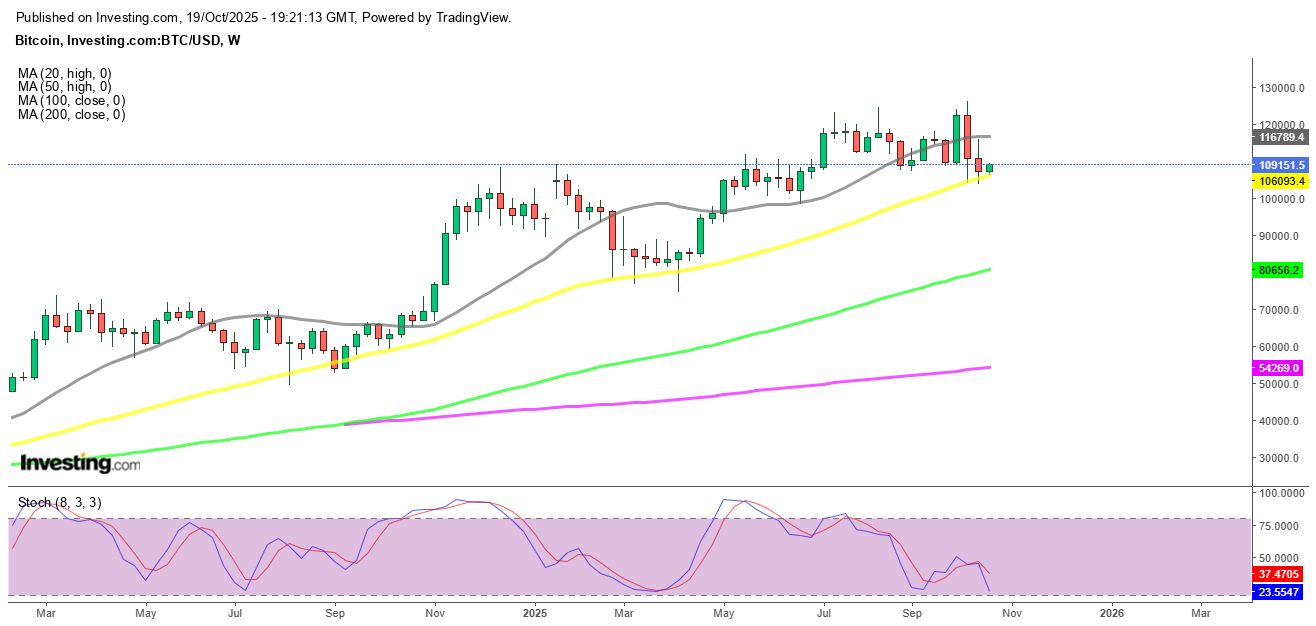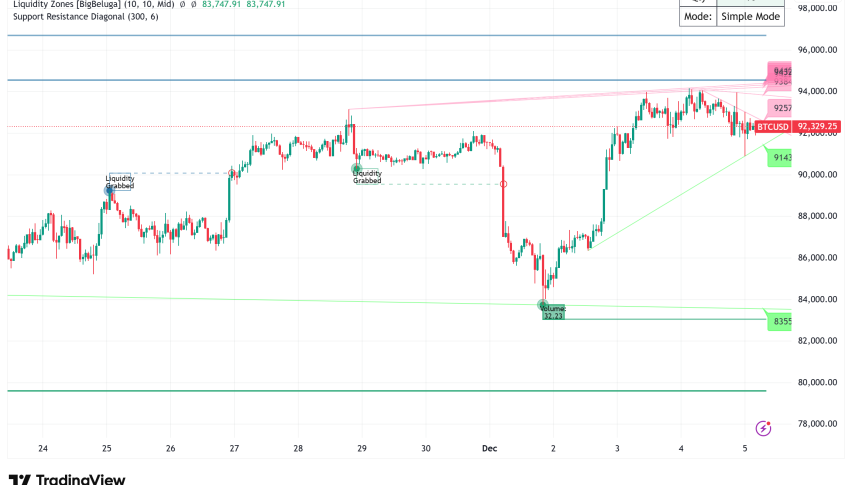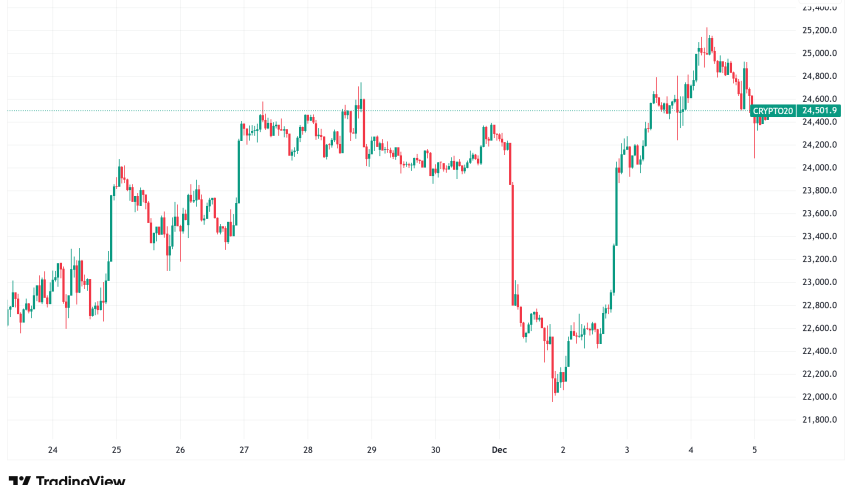Bitcoin Price Prediction: Buying the BTC Dip at Support While Supply Squeeze Reinforces the Base
Due to significant institutional inflows and growing confidence in rate cuts, Bitcoin has stabilized over $115,000 following a record...

Quick overview
- Bitcoin stabilized above $115,000 after a record-breaking collapse, supported by institutional inflows and confidence in rate cuts.
- The cryptocurrency experienced extreme volatility, reaching an all-time high of $126,000 before dropping to $105,000 due to tariff fears.
- Institutional support has been significant, with Bitcoin ETFs seeing $2.72 billion in net inflows, preventing a drop below the $100,000 mark.
- Despite ongoing volatility, Bitcoin's recovery signals strong underlying strength, with a potential push towards $130,000 in the near future.
Live BTC/USD Chart
Due to significant institutional inflows and growing confidence in rate cuts, Bitcoin has stabilized over $115,000 following a record-breaking slump brought on by panic selling and tariff fears.
A Record-Breaking Week of Chaos
Bitcoin (BTC-USD) faced one of its most volatile stretches in years, climbing to a new all-time high of $126,000 before plunging to $105,000 in less than 24 hours. The collapse followed President Donald Trump’s announcement of 100% tariffs on Chinese imports, which triggered a wave of global risk aversion and wiped out nearly $380 billion from Bitcoin’s market capitalization.
The panic rippled across both equities and digital assets, fueling the largest liquidation event in crypto history. However, by the weekend, Bitcoin had stabilized and rebounded near $115,000, showcasing its trademark resilience amid macroeconomic chaos.
Technical Support and Supply Squeeze Reinforce the Base
Despite the dramatic decline, Bitcoin held its ground at the 50-week Simple Moving Average (SMA)—a historically significant level marking major correction lows in prior bull cycles. The bounce from this technical floor has reaffirmed confidence in Bitcoin’s long-term uptrend.
At the same time, exchange balances have dropped sharply as investors moved coins into cold storage. Since early October, over 45,000 BTC (worth about $4.8 billion) have been withdrawn from centralized exchanges—evidence of a tightening supply dynamic and growing conviction among long-term holders.
BTC/USD Chart Weekly – The 50 SMA Is Holding
Momentum indicators, including the stochastic oscillator, have turned higher, hinting at renewed buying interest and a potential push toward $130,000 in the near term, so we decided to open a buy trade right at the 50 weekly SMA (yellow) which has been acting as support since 2023.
Institutional Inflows Cushion the Fall
One of the most defining features of the recent volatility has been the scale of institutional support. Spot Bitcoin ETFs saw $2.72 billion in net inflows during the week ending October 10, led by BlackRock’s iShares Bitcoin Trust (IBIT) with an impressive $2.63 billion intake.
Fidelity’s FBTC added $88.9 million, while Grayscale’s GBTC and ARK 21Shares ETF recorded only minor outflows. This wave of demand prevented Bitcoin from breaching the $100,000 psychological floor, signaling that institutional appetite remains robust even amid heavy volatility.
IBIT now holds nearly 800,000 BTC—around 4% of the circulating supply—and manages close to $100 billion in assets, making it the fastest-growing ETF in U.S. history.
Policy Shifts and Macro Forces Support the Narrative
Bitcoin’s prior surge to record highs was driven by macro optimism, policy shifts, and a pro-crypto tone from Washington. With the U.S. government shutdown weighing on economic confidence and national debt surpassing $37 trillion, investors are increasingly viewing Bitcoin as a hedge against fiscal and monetary instability.
The Federal Reserve’s dovish pivot, with futures markets now pricing in a 90% chance of another rate cut, has further boosted the appeal of risk assets. Meanwhile, emerging markets such as the Philippines, Malaysia, and Thailand are reportedly exploring ways to integrate Bitcoin into national reserves, underscoring its growing role in the global financial system.
Outlook: A Recovery in Motion
While short-term volatility remains high, Bitcoin’s ability to rebound quickly from a historic $20,000 loss suggests deep underlying strength. With ETF inflows rising, supply tightening, and monetary policy turning more supportive, the case for a continued recovery toward $130,000 appears increasingly credible.
The coming weeks may test that optimism as inflation data and global trade developments unfold—but for now, the world’s largest cryptocurrency looks set to reclaim its bullish momentum.
- Check out our free forex signals
- Follow the top economic events on FX Leaders economic calendar
- Trade better, discover more Forex Trading Strategies
- Open a FREE Trading Account




